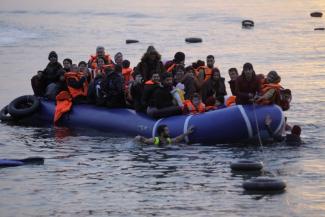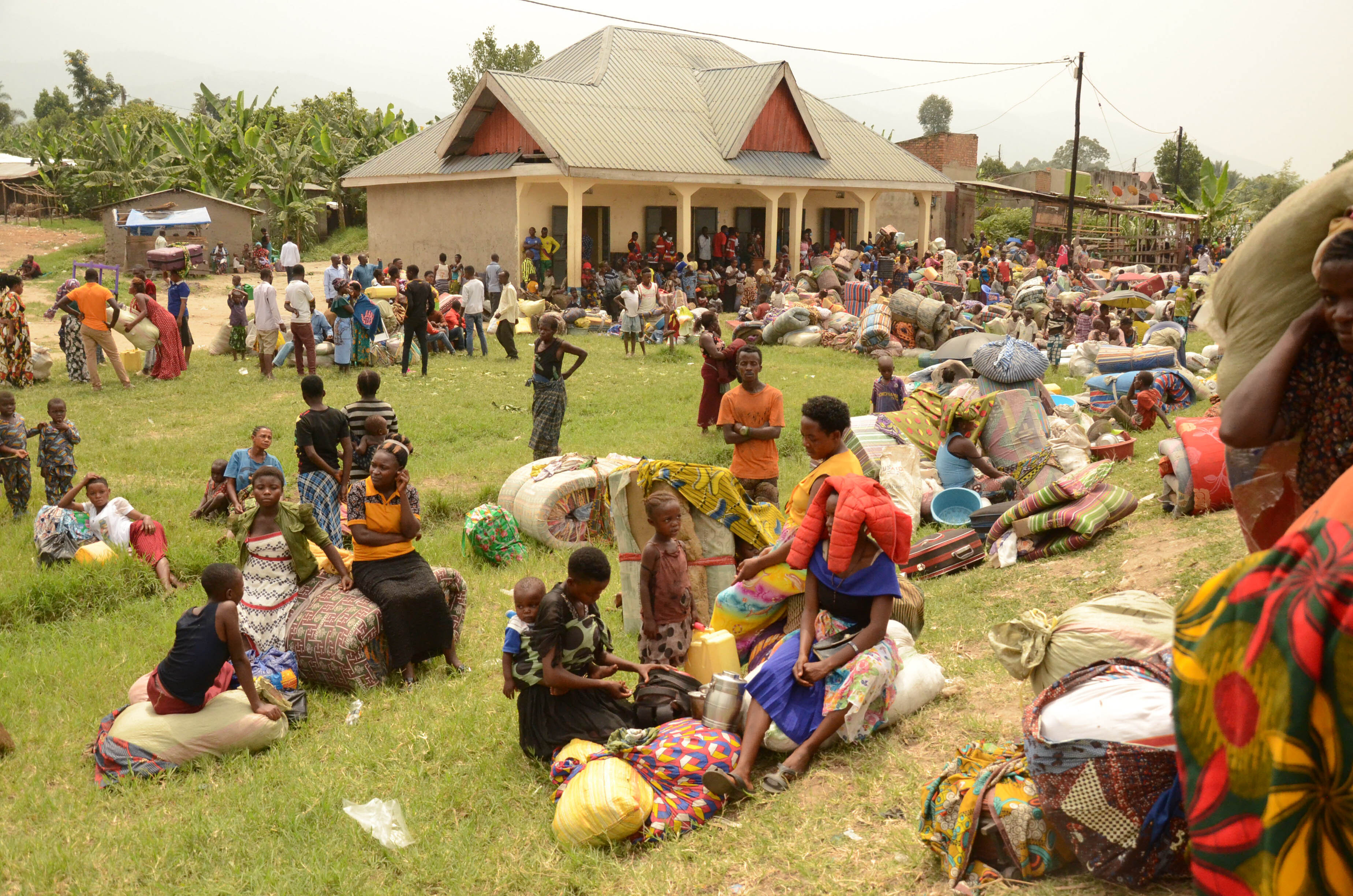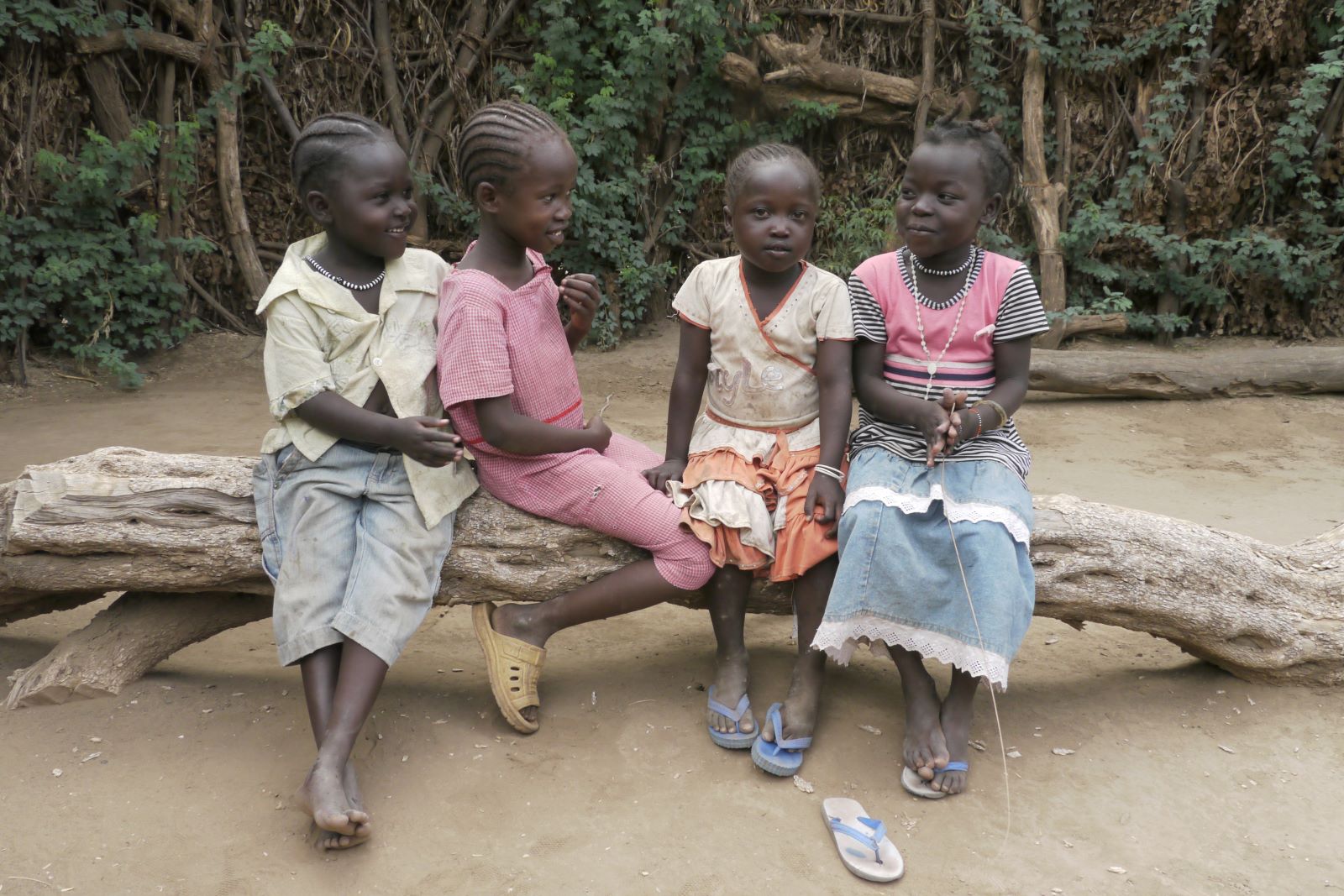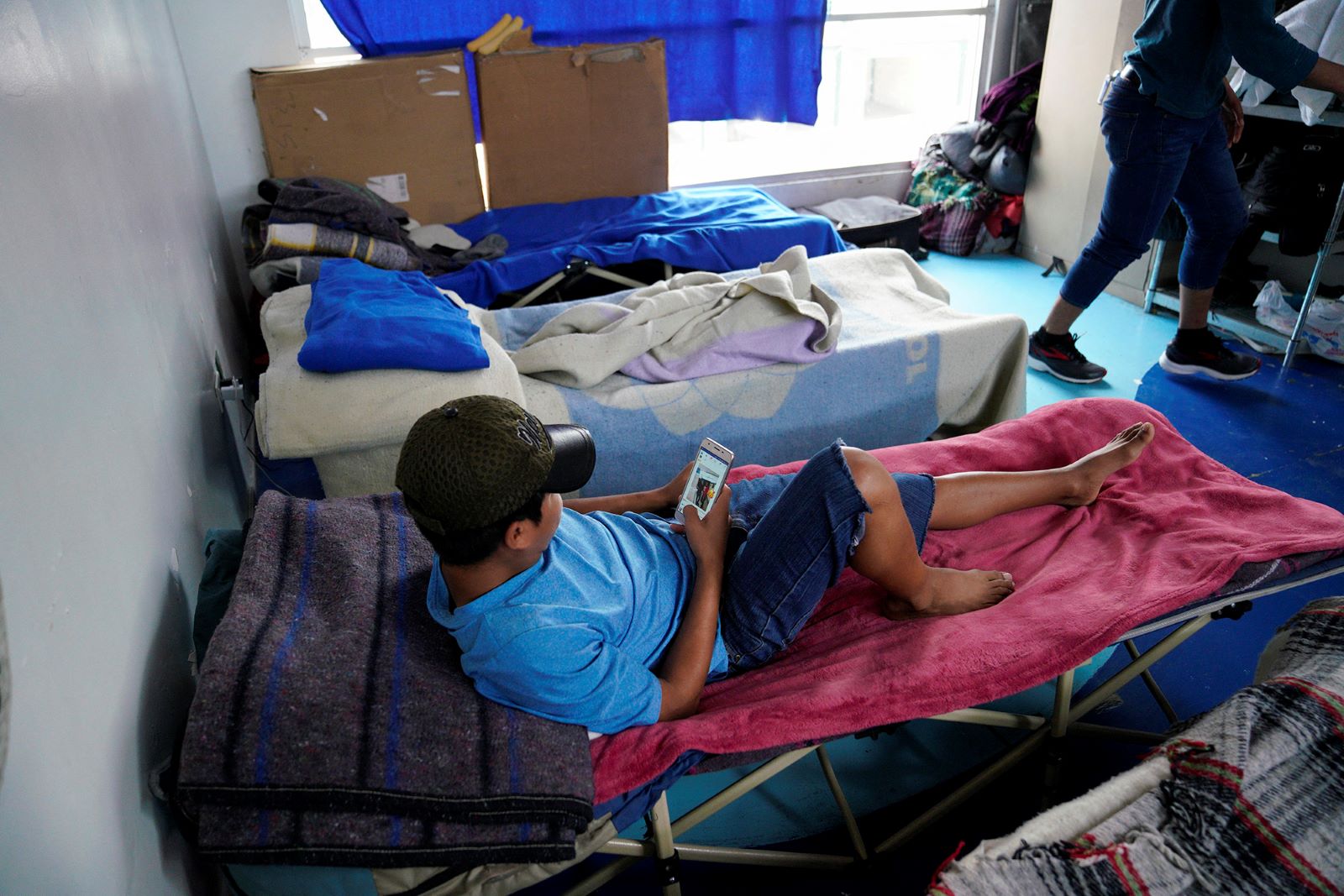Relevant reading
Freedom and development

Reviewing the history of “refugees” as a relatively new policy field makes sense. The definition of “refugee” has changed over time. Since the 1950s, migrants and refugees are considered two separate categories. According to this approach, refugees leave their home countries primarily for political reasons, whereas migrants are motivated by socio-economic concerns.
Katy Long (2013) considers this distinction counterproductive in many cases however. She argues that while it boosted protection for refugees, the focus on humanitarian aid made it very difficult for the persons concerned to find a livelihood of their own.
In the past, the main goal was to grant refugees access to migration channels, which were mostly chosen for economic reasons, Long shows. Russian refugees who were forced to leave their country after the October revolution posed that era’s greatest challenge. The Nansen passport was introduced in 1922 to allow them to travel, ideally to any country that needed workers.
Long elaborates how, for a long time, the International Labour Organization (ILO) was responsible for finding work opportunities for refugees internationally. They thus became labour migrants. The flipside was that where they ended up did not depend on their need for protection, but on criteria such as professional qualifications. In the course of the Great Depression of the 1930s, this system largely broke down. Many countries also sealed off their borders to refugees from Nazi Germany.
World War II displaced millions of people, so new institutions were established. One example was the International Refugee Organisation (IRO), the activities of which were continued by the UN Refugee Agency (UNHCR) from 1952 on. Many countries included refugees in the immigration quotas they defined. Whether refugees could lead self-determined lives outside of camps depended on economic factors. Accordingly, the Soviet Union argued that refugee camps were something like slave markets where Western powers could get cheap labour. In Long’s eyes, such accusations explain why the international community still struggles to view refugees as potential workers.
Rieko Karatani (2005) shows that the ILO’s plans to become the central multilateral institution for mobility failed because of such tensions. At a conference in Naples in 1951, the USA in particular thwarted ILO efforts. The reason was that Washington did not want to fund an international organisation that included representatives from communist countries. An inter-governmental organisation soon came into being instead: the PICMEE (Provisional Inter-Governmental Committee for the Movement of Migrants from Europe), a predecessor of today’s inter-governmental International Organisation for Migration (IOM).
Long’s essay points out that the IOM still finds it difficult to balance national interests in migration management on the one hand and humanitarian goals on the other. History, moreover, offers an explanation for the long-lasting and still evident rivalry between the ILO and IOM.
Long sees early attempts to agree an internationally binding regime concerning refugees not as a model, but rather as an invitation to find an alternative to today’s treatment of refugees and migrants. Current policy tends to focus on the sedentariness of refugees, for instance in camps, and increasingly restricts their mobility. Germany’s tightened residency obligation is one example. Long argues that far-sighted policy-making would focus on freedom and development rather than aid.
Such approaches are nothing new, as Adèle Garnier (2014) proves. In the 1980s, the UNHCR and ILO agreed to cooperate more closely in order to better protect refugees’ socio-economic rights and provide them with opportunities for integration. Cooperation intensified in the next two decades. Both organisations became increasingly committed to taking a rights-based approach in regard to migration. They promoted projects such as entrepreneurial workshops for women in refugee camps. In recent years, however, their collaboration has largely ground to a halt. The reasons, according to Garnier, include a lack of resources, competition between institutions and divergent policy priorities. She argues, moreover, that many countries are not prepared to recognise refugees’ right to work.
Survival migration
Disagreements on terms and categories have devastating consequences for millions of people. Therefore, Alexander Betts (2010), director of the Refugee Studies Centre at the University of Oxford and a leading researcher in the field, has proposed a new category: survival migration. This term applies to people who leave their home countries in response to an existential threat that cannot be resolved domestically. According to Betts, the notion of survival migration fills gaps in the institutional and normative framework of forced migration.
He points out that since the current refugee regime emerged in the specific historical context discussed above, forced migration has become increasingly driven by new causes like environmental disasters or fragile and failed statehood. Betts acknowledges that there has been progress at regional levels, with more far-reaching grounds for protection being defined in some cases. For instance, Latin American countries adopted the Cartagena Declaration on Refugees, which includes the “serious disturbance of the public order” among the reasons for flight. In spite of such developments, however, Betts states that many refugees do not get international protection today.
Betts’ notion of survival migration has three core elements:
- First, the people in question have left their home countries and are primarily getting support from the international community. This point is debatable, however, because this is often not so in transit countries. Accordingly, categories like “migrants in distress” or “migrants in countries in crisis” make sense. Betts also fails to take into account the fact that migrants experience distress not only in their countries of origin, but also in their countries of destination. Consider, for example, Filipino labour migrants in Iraq and Kuwait.
- The second element, which focuses on existential threats, is more important. In Betts’ eyes, these are circumstances that impinge on fundamental rights that must be upheld if other rights are to be guaranteed. Fundamental rights include “basic liberty”, “basic security” and “basic subsistence”, the last of which in particular is not covered by the currently prevalent definition of a refugee.
- Finally, the third element “access to a domestic remedy or resolution” refers to the fact that refugees cannot overcome the existential threat in question in their country of residence.
The concept of survival migration is much bigger in scope than common approaches. Nonetheless, Betts does not think that new institutions or conventions are urgently needed. His approach emphasises rights rather than causes. His point is that the protection of rights must be prioritised, and he is in favour of a so-called soft law approach with recommendations on how to safeguard survival migrants’ rights instead of spelling out requirements. The UN’s Guiding Principles on Internal Displacement serve as his model.
Fully in line with Betts’ approach are the Recommended Principles and Guidelines on Human Rights at International Borders. The UN published them in October 2014. The principles regulate the basic rights of migrants and refugees. They are particularly valuable at a time of increased militarisation at borders, when even the use of firearms is being discussed.
Stefan Rother is a research associate in the Department of Political Science at the University of Freiburg.
stefan.rother@politik.uni-freiburg.de
References:
Betts, A., 2010: Survival migration: A new protection framework. Global Governance 16 (3): 361–82.
Betts, A., 2013: Survival migration: Failed governance and the crisis of displacement. Ithaca, NY: Cornell University Press.
Garnier, A., 2014: Arrested development? UNHCR, ILO, and the refugees’ right to work. Refuge: Canada’s periodical on refugees 30 (2): 15–25.
Karatani, R., 2005: How history separated refugee and migrant regimes: In search of their institutional origins. International Journal of Refugee Law 17 (3): 517–41.
Long, K., 2013: When refugees stopped being migrants: Movement, labour and humanitarian protection. Migration Studies 1 (1): 4–26.
Links:
Blog of the German refugee studies network:
http://fluechtlingsforschung.net/blog/
Recommended Principles and Guidelines on Human Rights at International Borders:
https://gfmd2010.wordpress.com/2014/10/23/un-releases-principles-and-guidelines-on-human-rights-at-international-borders-migration/











